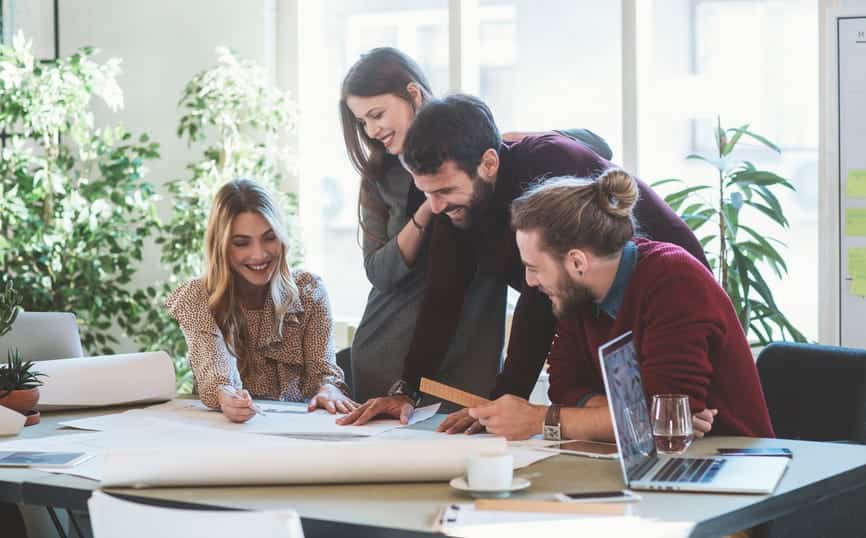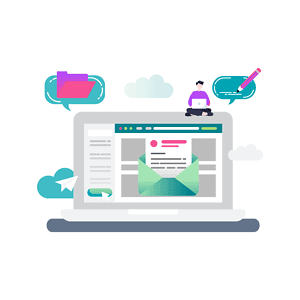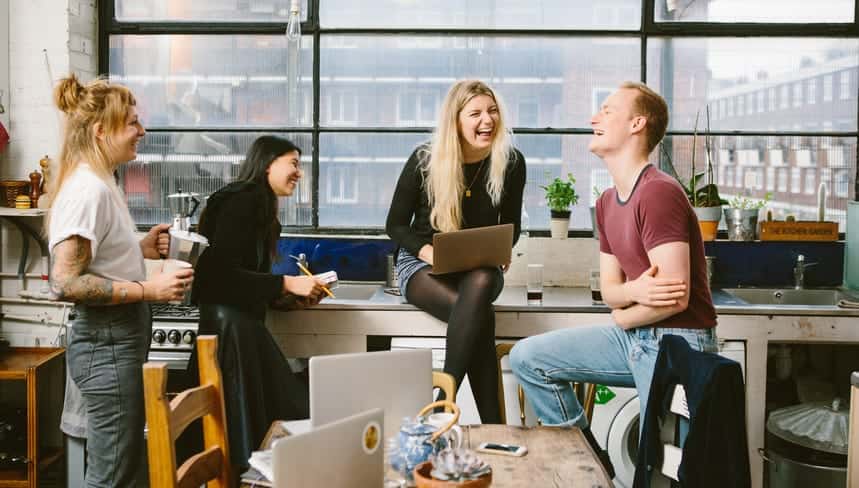Membership models are hot stuff in online business right now — and for good reason! Forbes predicts that the global subscription market size will grow to more than $900 billion by 2026. And existing subscription and membership model brands grew their customer base by more than 31 percent in 2021 alone.
But is a membership model right for your business? If that’s the question you’ve been asking yourself, you’ve come to the right place.
🚀 In this article, we’ll go over the basics of what a membership model is and the pros and cons of adding a membership to your business. We’ll share the basic steps for how to get started building your membership site, and then we’ll share 13 of the best membership models we’ve identified so you can choose the exact model that works best for your business and customers.
What is a membership business model?
In the simplest terms, a membership business model is one in which clients pay a fee for information, community, tools, access, or some combination of these. Think about some famous memberships like Amazon Prime (free shipping and other perks with membership), Costco or Sam’s Club (access to discounted products in bulk), and Netflix (access to movies and TV shows on demand). Your gym is a type of membership and so is your local library! Once you start looking, there are examples of membership business models everywhere.
For online businesses, a membership model will often include a membership site. A membership site is a place where free or paying members can log in to access their content, courses, and community. A key component of a membership site is the ability to control access to content contained within.
You can charge a one-time fee for access or build in a recurring revenue stream with monthly or yearly payments. This creates a steady income, no matter which type of membership model you choose to create.
✅ We have put together this chart to give you an idea of how the different types of membership models relate to one another in terms of your time and energy to create and deliver them. We’ll discuss each of the 13 types in more detail below.


What are the benefits of a membership model?
The amazing thing about about a membership model for your business is that it has a ton of benefits for both your business and for your customers:
Membership model benefits for your business
Steady income
While a membership model can’t guarantee income, it typically helps to stabilize it for businesses. Once your membership is up and running, you can easily predict new customer acquisition, retention rates, and churn and from there predict revenue with a fair amount of certainty.
Customer retention
Memberships often tap into a psychological desire for continuity, which biases consumers toward staying with a product or service they know rather than facing uncertainty. Assuming your products meet people’s needs, you can expect high customer retention
Serve more people
Membership models are also a good way for a service provider, like a coach or consultant for example, to scale their business and serve a larger number of people in a one-to-many model.
Upselling and cross-selling
Membership models often include different membership levels, and a customer who joins at the lowest level will be reminded frequently of the benefits of higher membership levels, making upselling or cross-selling complimentary packages easier.
Build relationships
Instead of having a one-time transaction, membership models build ongoing relationships with customers. This allows you, the membership owner, to see the growth and progress of your members over time, which can be very rewarding. And for your members, it translates into a feeling of ongoing support.
Continuous sales
With some business models, especially online courses and business consulting, the business owner either sets deadlines for sales (when a course is open for enrollment) or is constantly hustling to get the next sale. With a membership model, the membership is often open for enrollment all the time, removing a lot of the pressure on business owners to make sales deadlines.
Membership model benefits for your customers
There are also some excellent benefits for your customers with a membership model.
Continuity
Customers who stay with a membership will experience greater continuity, maybe in their learning, their community, or their progress, than if they jump around to many different solutions.
Access to resources any time
Membership models online usually rely on a membership site, which provides customers access to their information, products, or tools at any time, regardless of when the owner or team are available.
Pricing
Membership models typically offer competitive pricing to incentivize customers to stay with the product or service over time, which can definitely benefit the customer over a large one-time investment.
Convenience
Membership models are designed for convenience, offering customers the ability to customize their experience and access goods or services exactly where and when they want to.
Community
One built-in feature of memberships is community. Customers like to feel they are a part of something, whether that’s being “in the know” with a discount membership, or actually fostering conversation and support with a membership that includes a community element.
Are there any downsides to a membership model?
Of course, a membership model isn’t going to solve every problem your business might face. Just like with any business model, there are some downsides to membership models that you should consider:
Content debt
Some membership creators put themselves into “content debt” the moment they start a membership by promising a certain amount of new content on a regular basis. Think of an educational membership that promises a new course every month, for example. While this can be great for members, it can put a lot of pressure on the creator if they don’t have a clear plan for how to create all that content.
Churn
One of the biggest downsides of a membership is customer churn. This is the term for when a customer decides to cancel their membership. For example, if a customer goes through all the information in a membership and feels there’s nothing new for them, they might cancel the membership. (Which is how many membership owners get themselves into content debt, as mentioned above, trying to provide new content to retain members.) There are lots of strategies you can use to reduce churn, but understanding that some percentage of your customers will leave each period is vital.
Marketing funnel
While a membership model does have a lot of advantages when it comes to marketing and selling, one of the disadvantages is that you must be constantly adding new people to the top of your marketing funnel to keep your membership full — because some percentage will always be churning out, as mentioned above. This means that a membership model business must be constantly adding new cold leads to the top of their marketing funnel to help replace the people who are churning out.
Added customer service
Because a membership model serves more people than a one-to-one business model, it will necessarily also generate more customer service requests. Even the very best businesses can expect an increase in customer service demands when they add a membership model, and so you should prepare for it.
As you can see, none of these downsides should be a deal breaker, but they’re good to keep in mind when deciding if a membership model is right for your business.
How to create a membership for your business
Depending on the type of membership model you choose, the exact steps you’ll take to build your membership will vary slightly, but here’s a good overview of what you can expect when putting together a new membership offer for your business:
Step 1: Choose a membership site model and offer
As you’ll see below, there are a variety of different types of membership models you can choose from (we’ve identified 13!). You’ll want to start by thinking about your ideal customers, company values, how you like to deliver content, and so on before you choose which membership model is right for you.
💡 Remember: While it’s always a good idea to do your due diligence and think about the type of offer you want to create, you can always add features and perks to your membership as you go.
Once you’ve chosen a model, decide on your offer. Will it be a one-time investment, or a recurring fee? Will you offer multiple tiers of membership with different benefits? Just like with any offer, you need to think through all the benefits and features your customers will want.
Step 2: Choose your technology
If you’re going to be delivering your membership online — whether that means people will be ordering products through a subscription on your website, enrolling in an online course, or accessing your online community — you’ll need to decide on the technology you’ll need to help deliver it.
Crucially, you’ll need software that will allow you to protect content or products that are exclusive to members and allow them access. You’ll also want a way to accept payments, whether one-time or recurring, and you’ll want to consider the types of features you want to offer, like quizzes or assessments, certifications, communities, and so on.
Essentially, there are a few main questions you’ll want to ask yourself, and we’ve laid them all out for you in this article on how to choose the right membership software for you, but here are a few basic questions to consider:
- Is your goal to sell online courses as part of your membership?
- Are you brand new to coaching and teaching, or do you have experience?
- Do you already have a website?
- How important is it that you have full control over your branding?
These questions will help you determine which software platform is best for your membership.
Use this flow chart to help you make a decision about the type of technology that’s right for your membership.


Step 3: Build your membership
Now it’s time to build out your membership, which might include adding items to your online store, adding content to your courses, or putting together the spaces your customers will use to connect.
Many creators will choose to start with a “minimum viable product” and build out the membership content over time. Think about the features that will most entice your early adopters to join and build those out first.
For example, if you’re starting an online course-style membership, you will want to have at least some of the course material ready to go when people buy. That might mean recording videos, creating worksheets or assessments, and so on.
The type of content or products you’ll want to create will depend on the membership model you choose.
Step 4: Set up your funnel and start selling
Ask yourself: how will new people find out about your membership? Maybe you will run ads to audiences of your ideal customers. Maybe you will have a sales person that approaches schools, corporations, or other groups that reach your customers. Maybe you’ll rely on word of mouth referrals and affiliate programs that let happy customers become your evangelists.
Whatever method you choose, once you’ve tested your membership with your existing audience and had some success, you’ll want to set up your marketing funnel and start bringing in new leads and customers.
Remember: one feature of membership models is that you will want to create a constant stream of new leads to replace any customers who naturally cancel their membership and churn out over time.
How to Choose the Best Membership Site Model for Your Business
What membership site models will be the most profitable for your business? (Yes, you can combine more than one!)
It’s a question you’ll need to answer in order to create a membership site that will grow your current business. There are different types of online course sites and experiences you can create based on your strengths as a teacher, leader, and business owner.
And what your ideal customers are willing to invest in.
In short: the type of membership site model you choose can make or break your offer. And affect conversions and the long term sustainability of your site.
Below, we’ll go over 13 profitable and easy membership models that you add to your online business. Plus a few membership site examples to inspire you.
13 Best Membership Models for Any Business
1. The All-You-Can-Eat Education Buffet
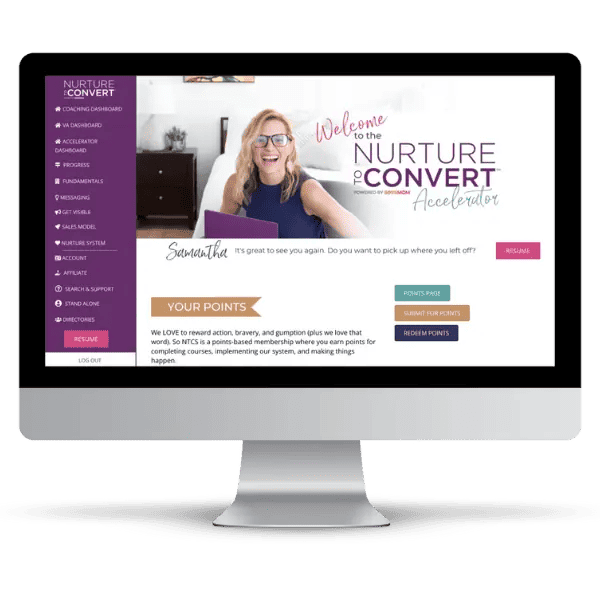

Think of this style of membership model as the Netflix of online learning: a member joins and has access to a bunch of content from day one. It’s a library of courses that continues to grow over time to incentivize current customers to stick around and attract new clients, too.
The most important thing you can do in designing your education buffet membership is to make it easy for people to find the right online course for them.
You can do that using quizzes that guide people to the right next step. Or, you can connect them with the appropriate material by offering sophisticated search functionality. Or even giving recommendations based on previous courses they’ve enjoyed.
This buffet-style membership site attracts people who want to improve themselves and their skills. They may come on board to achieve a specific goal and leave when they’ve gotten what they needed.
But if you plan out an educational roadmap then people will know where to go next after they complete their initial goal.
Many education buffets offer a wide range of topics to attract a large client base. However, when you’re just getting started, it helps to have a focused outcome in mind that appeals to a very specific audience.
These types of membership sites are a great way to keep members long-term, or for a fixed duration. The way you sell the video content will differ based on the benefits you could offer through your content.
Focus on getting a targeted set of courses done well, and branch out from there. You might also want to hire someone to help from a digital marketing and tech set up perspective.
Example: Boss Mom started as a community, grew into a membership, and now offers several certifications and more. Read about how she pushes the boundaries of what a membership can be.
2. Subscription boxes + digital membership


You may already subscribe to successful memberships of this nature. The ones where you get something in the mail every month as part of your membership.
Subscription boxes are a membership site with a monthly fee that includes at least one physical item.
Often, the items in the box will change each month, to keep customers excited and engaged. They may be full-sized products or samples of new releases from different brands.
There are many monthly subscription services where members get curated materials delivered straight to them on a regular basis.
The membership site focuses on the “how to” training that goes with the mailed item. It’s like having access to a mini online course on an ongoing basis, with new content and tips.
Example: A great example of a successful membership site is OrnamentGirls.com, where her subscription box business sends members a new kit to make an ornament each month. Read more about how she runs her subscription membership with Access Ally.
3. Discount Clubs
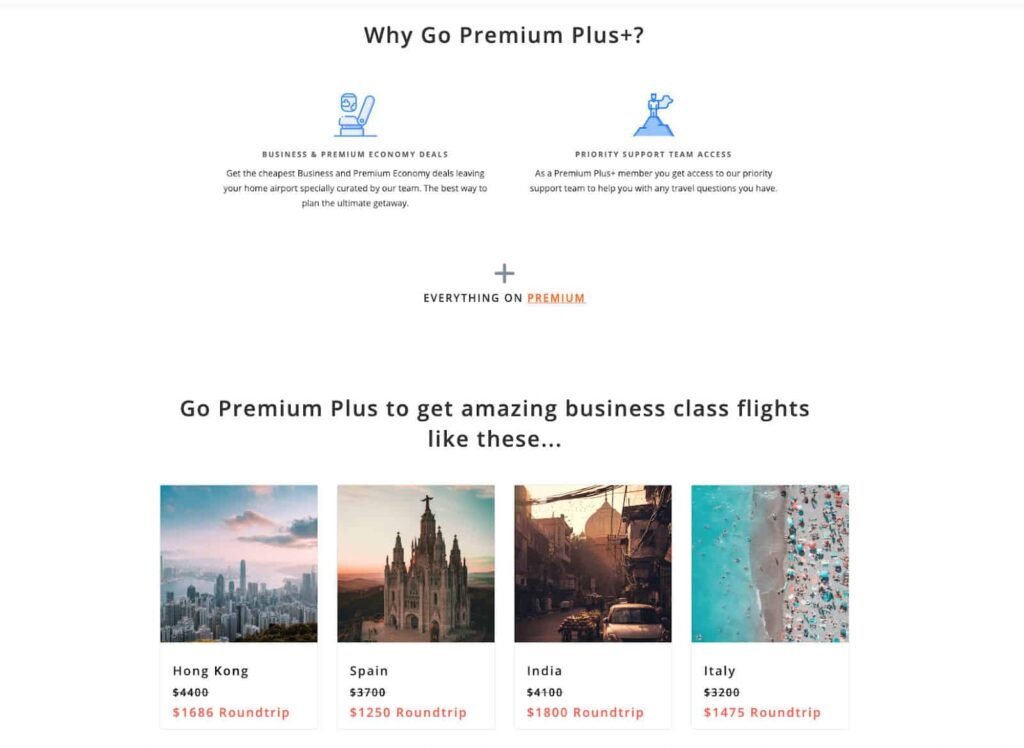

A discount club is a membership site based on the idea of giving members discounts or deals.
For example, someone might join for $50 and receive 20% off everything in an online store every day.
Or there might be different tiers where you pay more upfront to get better discounts. Promotions could be as much as 50%. Especially when it comes to promoting online courses with video, software, or a digital download since these have a high-profit margin that can be more easily shared.
The higher your tier, the greater the percentage that will be applied to all items purchased from a storefront each month.
In general, there are two types: tiered clubs and instant savings clubs. Tiered clubs require an initiation fee up-front while Instant Savings Clubs don’t need any type of commitment at first because they work by providing customers with instant cash back after spending money.
Don’t have your own products to discount yet?
It’s also a good idea to negotiate discounts for affiliate products, if you don’t have a large catalog of products to sell.
Example: Dollar Flight Club is a membership that alerts members when they find flights at a significant discount leaving from their home airport.
4. Online Community Membership


The online community membership site is all about facilitating strong relationship-building among your paying members. Think of it like social media, but on your own site.
A successful membership site using this structure will focus on giving members access to each other, whether that’s through a forum or other community service models.
Some of the identifying features of a community-focused membership include:
- Member directory: where users can search for, and connect with, one another.
- Membership Forum: so members can easily carry on group discussions.
- Masterminds: where members receive a high level of support, feedback, and resources.
- Accountability tools: so members are empowered to follow through and achieve their goals.
This is an especially powerful type of membership site for clients who need help meeting their peers and getting the support or those who are looking for high-end resources to get ahead.
There are a number of things to think about when creating a community-focused membership site, from membership goals to mapping out the engagement interaction paths that will be available inside your membership site.
The more active, engaging, and supportive you are as the organizer, the better experience your members will have.
The best part about this type of membership is that people are more likely to stay with you as active paying members once they’ve made great connections in your community.
Muneeza Ahmed has a beautiful membership community built around her intuitive medicine practice.
5. Paid Member Directory Listings


Paid directory listings are a great way to create an instant revenue stream for your membership website.
Think of this option as the chamber of commerce, but for your particular industry.
You can offer members the ability to list their services and products in these directories, which is useful if they’re trying to build credibility with potential clients.
Paid listing fees range from $49 per year up to as much as several hundred dollars annually depending on what options you want included and level of service (whether it’s local only, worldwide).
Once someone lists their business with you, there will be annual renewal charges that need payment each year. Different membership offers can include premium listings to have some members show up higher in the results.
You might be interested in a WordPress member directory plugin that allows members to customize their profiles, opt out of the listing, or connect with each other more easily.
It’s also possible to bundle an online course with a business directory or membership directory into one membership website. Take a look at some different member directory examples here.
6. Group Coaching Membership Site


The monthly coaching membership is often called group coaching, and it packs a lot of value for the participants.
Group coaching membership sites can be a powerful way for people to get access to the best professionals in their field.
This type of site is perfect for those who want mentors or need help navigating through life transitions from career change to family changes.
Topics can range from parenting, business development, wellness & fitness training & education, relationship advice, finance management, and creativity exploration.
There are a few different ways to offer coaching with this model:
Generally, you’d offer live office hours or coaching calls where members can show up, ask questions, get support, and accountability. You can also create opportunities for the coach or leader to keep track of participants’ progress, encouraging them if they get stuck along the way.
Ideal clients can range from busy executives and business owners to anyone who has a personal goal to achieve. In any case, the client needs help to make their goals happen (think athletes, students, language learners, etc.).
People prioritize what they care about. Committing to this type of coaching membership helps clients pursue and make their dreams a reality.
There aren’t a lot of places where you can get individual attention from someone with a lot of expertise. At least, not without breaking the bank.
This type of membership offers you and your clients the best of both worlds.
Find out how to name your different membership tiers here.
If coaching is something you love and you want to help your clients achieve their goals (without putting a cap on your earning potential), this might be for you!
Example: Sigrun’s online coaching platform
7. Done-for-you Plans and Content Site Models


With a done-for-you recurring subscription program, it’s easier to bundle your work and also drip the content out over time.
If a teacher, ministry leader, or blogger needs new content each week and can simply take your material and tweak it… They’ll stay on board to save time and keep getting your new materials.
It’s a no-brainer for the right clients, and if you’re drawn to this type of membership it’s likely because you’ve BEEN your ideal client so you can create the best materials for them.
This type of membership will see you creating a lot of consistent content, so think through the best way to organize it from day one.
Offering templates, lesson plans, and other “done for you” downloads is a powerful way to scale and provide items of value to members.
Anything that saves people time is highly valued, and if you’re already seeing interest, you know that the demand is there. All that’s left is a matter of marketing it properly to get the word out.
This type of membership tends to be extremely stable, because of the recurring needs of your specific set of clientele.
If you’re already doing the work creating this type of content, and people are asking how you do it or if you ever offer it… then this might be a great type of membership site for you to offer.
Rachel Feldman offers more than 180 done-for-you programs and content for other health and wellness professionals through her membership. Check out how she uses Access Ally to power her membership business.
8. Retainers for Clients
The best way to describe this type of membership is a client dashboard. It can be used to facilitate the process of onboarding a new client.
Or, you might use the membership site after the services have been delivered, as a way to stay in touch with a client and offer additional training or resources.
It’s set up to communicate with your clients, retainer engagements, and other services… so you’re freed up to focus on the service itself, whether that’s interior design, copywriting, or health coaching.
You can even create a coaching portal membership site for your 1-on-1 clients.
Depending on which step of the client process your membership site will take over, you’ll want to create a map of the steps that you generally take when signing up a new client, while you’re working with them, or after you wrap up an engagement.
A huge part of this membership model depends on leveraging a Customer Relationship Management (CRM) system. This lets you keep track of each clients’ interactions and where they are along the process and tag them based on what point they’re at in the process (whether they have signed a contract, agreed to your terms, watched the welcome video, booked their first call, or any of other steps you generally do manually).
9. Downloadable Resource Membership Sites


This type of membership offers busy professionals a shortcut.
If you’re a creator or you have a community of creatives that can generate a lot of useful content, this is a great model.
Creative content like royalty-free music can be delivered to members on a regular basis.
Other types of resources that could be included: templates, downloadable music, videos and graphics packs, font collections, webinar slides, and course outlines.
Resources are the backbone of any successful membership site. A lot of work is put into them upfront so that it’s easier for those who buy the subscription plan to do their part when creating content. For example, you might offer Elementor membership site templates or designs, and those take time to create.
With done-for-you recurring subscriptions programs, there will always be new content coming in regularly with each monthly or yearly payment period.
This type of model also has the option of being drip-fed over time instead of all at once like other models might have it set up.
Flaticon is a great example of Done for You Resources. Here, you can buy sets of icons in various styles and sizes.
Koffee Klatch offers a range of industry-specific legal documents for virtual assistants, social media managers, graphic and web designers, coaches, bookkeepers, and course creators. Learn more about how she uses Access Ally to run her membership.
10. Accountability Membership


Accountability memberships are for those who want to get in the habit of doing something and need help staying accountable and on track with goals. Or just want someone else to provide a little push.
In these membership models you’ll find things like classes that require meeting at specific times (for example: weekly yoga), online programs where participants must log their progress each day, monthly coaching sessions/check-ins, etc.
There might be an app that goes along with this type of membership model. Or it might be something that can be done within a membership site, since these can be mobile friendly too.
There are different models for providing accountability, whether it’s for a cohort of students going through an online course together, or people going after a different goal. The value is in the personal connections and feeling you have access to the support you need.
Life Pro Fitness offers wellness, recovery, and fitness products like vibration plates and massagers. Read more about how they migrated 150,000 members to a more modern membership site with Access Ally to provide virtual workouts, explainer videos, and content that has reached over 1 million people.
11. Agency and Service Memberships


This is a no-brainer type of membership for freelancers, agencies, and anyone who works with clients already.
It’s also a great way to onboard 1 on 1 coaching clients, and build in a clear process to keep everyone on the same page.
Since the majority of your audience is freelancers, agencies, and service providers. You get to offer a product or service they can actually use for an affordable monthly fee! And you are only competing with others who provide similar services.
The best part is that this smooths out the freelancer’s feast and famine cycles. You also have a more predictable amount of work month after month.
Example: SnapCopy uses credits to manage client copywriting projects.
12. Internal Training Turned Into a Profit Center
As your business grows, you’ll start to amass a lot of internal knowledge that you want your whole team to become familiar with. Having a membership site to host internal training, onboarding videos, exercises, and other resources is extremely efficient.
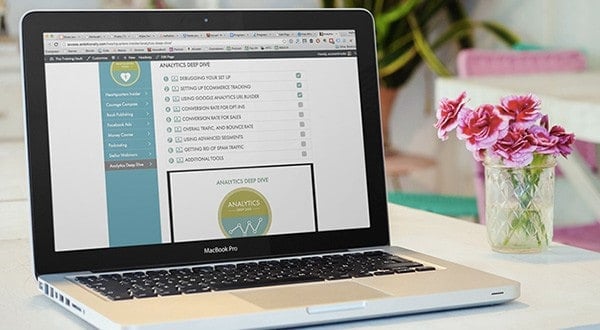

You can keep track of who on your team is up to speed, and easily bring in new team members and help them onboard quickly. Tracking metrics like this means you’ve got a finger on the pulse of your business and team’s growth.
A solid internal training program can strengthen any growing team. As your business grows and requires more team members to function, it will become a no-brainer to have this program in place. Not only will it free you up from doing 1-1 training, but it will also ensure that everyone is on the same page.
If you’re working with a team, you’ve probably already started recording short training videos for how to do certain things in your business, or run weekly/monthly training sessions that are recorded. You might have even started to create a company wiki to house this information.’
You can also use this strategy to offer CEUs or another type of certification.
Example: Digital Marketer turned their own internal company training into a paid certification program that they’ve continued to improve and earn from.
13. Dripped Content or Online Courses


Some membership site models are a natural fit for things that happen every month or every week. For example, you might be creating a new piece of content to match the astrological changes happening each month.
Or, you might be launching an online course that would be better consumed over time, like music lessons that must be mastered before moving on.
Doing this type of membership might mean you need a drip course plugin, or other way to release content over time if you’re not creating it live each month or week.
Adding an online course to existing membership sites shouldn’t be too complicated, depending on what software you use to help your online business.
Kim Garst, an international best-selling author and a Forbes Top 10 Social Media Power Influencer, offers courses for aspiring entrepreneurs. Read more about how her membership site brings in $20,000 a month in revenue.
In the end, you know best who your current clients are and what you can offer as a benefit to help them grow, whether that’s following a membership model or selling online courses.
Don’t be concerned if none of the options above feels like the “perfect fit.” You can always mix and match membership site models to come up with the perfect balance.
That way your membership model is guaranteed to engage your clients and bring in a stream of recurring revenue.

